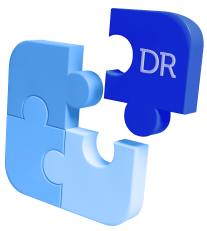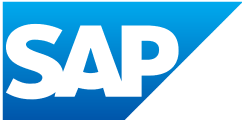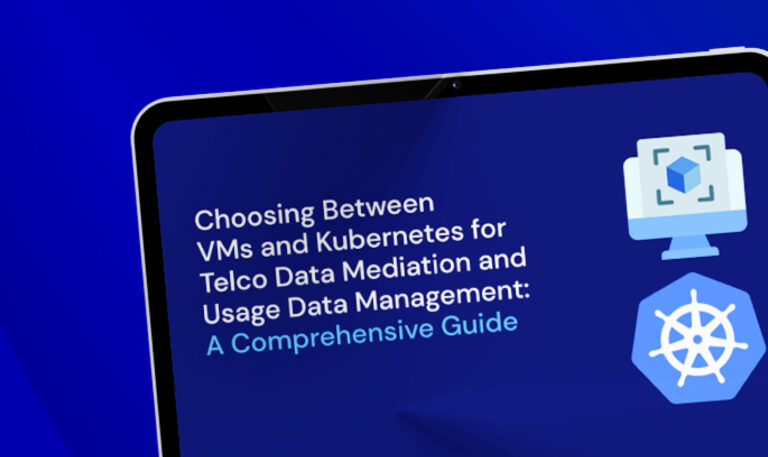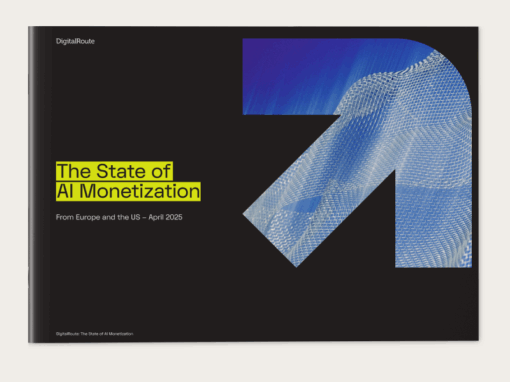Why monetizing hybrid services starts with trusted data — and how DigitalRoute enables it in TM Forum’s SATCOM with an Edge Catalyst
Satellite, SD-WAN, and 5G are increasingly forming the backbone of unified, on-demand telecom services — especially in areas where coverage, resilience, and reach are non-negotiable. But orchestrating these services across different domains, networks, and providers raises big challenges: how to ensure seamless activation, SLA tracking, and service assurance in real time.
That’s the broader focus of the TM Forum Catalyst SATCOM with an Edge – Phase III: enabling hybrid service delivery and cross-domain orchestration using TM Forum Open APIs and SD-WAN routing intelligence.
Within that architecture, DigitalRoute plays a focused role: ensuring that the usage data generated by these services — including Call Detail Records (CDRs) and SLA-relevant metadata — is complete, contextualized, and ready to support monetization, audit, and service accountability.
The operational shift: From domain-centric to service-centric thinking
Traditional OSS architectures evolved in vertically aligned environments. A service was provisioned, monitored, and billed within a single network stack. But now?
- A drone command session may start over terrestrial 5G and fail over to satellite uplink.
- A field technician may upload sensor data via SD-WAN backhaul with variable link quality.
- A critical application may span multiple slices or operators, depending on location and load.
In these cases, usage data doesn’t just move across systems — it crosses ownership boundaries, link types, and SLAs. And it often does so without centralized oversight in the moment it happens.
Without a usage data mediation layer built to handle this, OSS/BSS processes lose sight of what’s being used, by whom, and under what conditions — with major implications for service assurance, charging, and partner settlement.
What breaks — and why it matters
When service logic crosses domains, three common failure points appear:
1. Loss of context
Events collected from different sources often arrive without shared metadata. Who initiated the session? What QoS tier applied? What policy rules were triggered?
2. Fragmented records
Usage records from satellite and terrestrial domains may use different formats, timestamps, or sequencing — making it hard to assemble a clean session timeline for billing or assurance.
3. Delayed or incomplete delivery
When links drop or rebuffer, usage data may arrive out of order or not at all — creating invoicing or reporting gaps in billing systems or SLA monitoring tools.
These are not theoretical risks. They are daily realities for operators delivering hybrid services. And they directly impact revenue assurance, compliance, and customer trust.
DigitalRoute’s role in the catalyst: Processing CDRs for monetization and SLA trust
In SATCOM with an Edge – Phase III, DigitalRoute provides the usage data mediation layer that processes CDRs generated by the 5G Core and related infrastructure. These records form the foundation for downstream monetization and SLA evaluation.
Importantly, the CDRs originate from the terrestrial domain — specifically from the 5G Core provided by Bell — but they include metadata reflecting the broader hybrid service context. This includes information such as user identity, service class, and backhaul type, enabling usage data to support charging and assurance across both terrestrial and satellite environments.
DigitalRoute ensures that this data is not only collected, but transformed into a revenue-grade asset:
- Ingesting CDRs and usage-related metadata, including user ID, service class, and backhaul context
- Normalizing and enriching those records, aligning with TMF APIs and applying relevant SLA or partner context
- Delivering structured usage data to billing, assurance, and inventory systems — with ordering, completeness, and traceability guarantees
This enables downstream systems — like those from Enghouse Networks, Oracle, and others — to treat hybrid service usage as a single, auditable flow, even when service paths are diverse.
What we mean by ‘revenue-grade’
Revenue-grade usage data is accurate, with no duplicates or missing fields. It is contextual, carrying service identifiers, location information, and policy metadata. And it is ordered, meaning it’s structured and sequenced for downstream use in charging, SLA assurance, or partner settlement.
That’s the kind of data required to reliably monetize services across domains.
Why this matters now
For OSS and BSS leaders, the question is no longer “Can we connect the services?” It’s “Can we operate and monetize them in real time, across domains, with commercial integrity?”
This catalyst helps answer that question — by showing how usage data mediation fits into a broader ecosystem of:
- Service orchestration and SLA enforcement across hybrid networks
- Policy-based routing and domain abstraction
- Cross-domain usage data that enables billing and assurance
In multi-domain service environments, where multiple operators collaborate to deliver a unified SLA-backed service, usage data becomes a shared source of truth. Usage data mediation ensures that each partner — terrestrial or satellite — can account for its role in the delivery chain, supporting transparent monetization, SLA tracking, and partner settlement.
It shows that with the right usage data mediation layer in place; usage data becomes a trusted input to delivering commercially viable hybrid services.
Learn More
If you’re working on usage-aware hybrid services or modernizing your OSS/BSS for distributed delivery, let’s talk. We’re happy to share insights from this catalyst and explore how usage data mediation can de-risk your cross-domain strategy.









